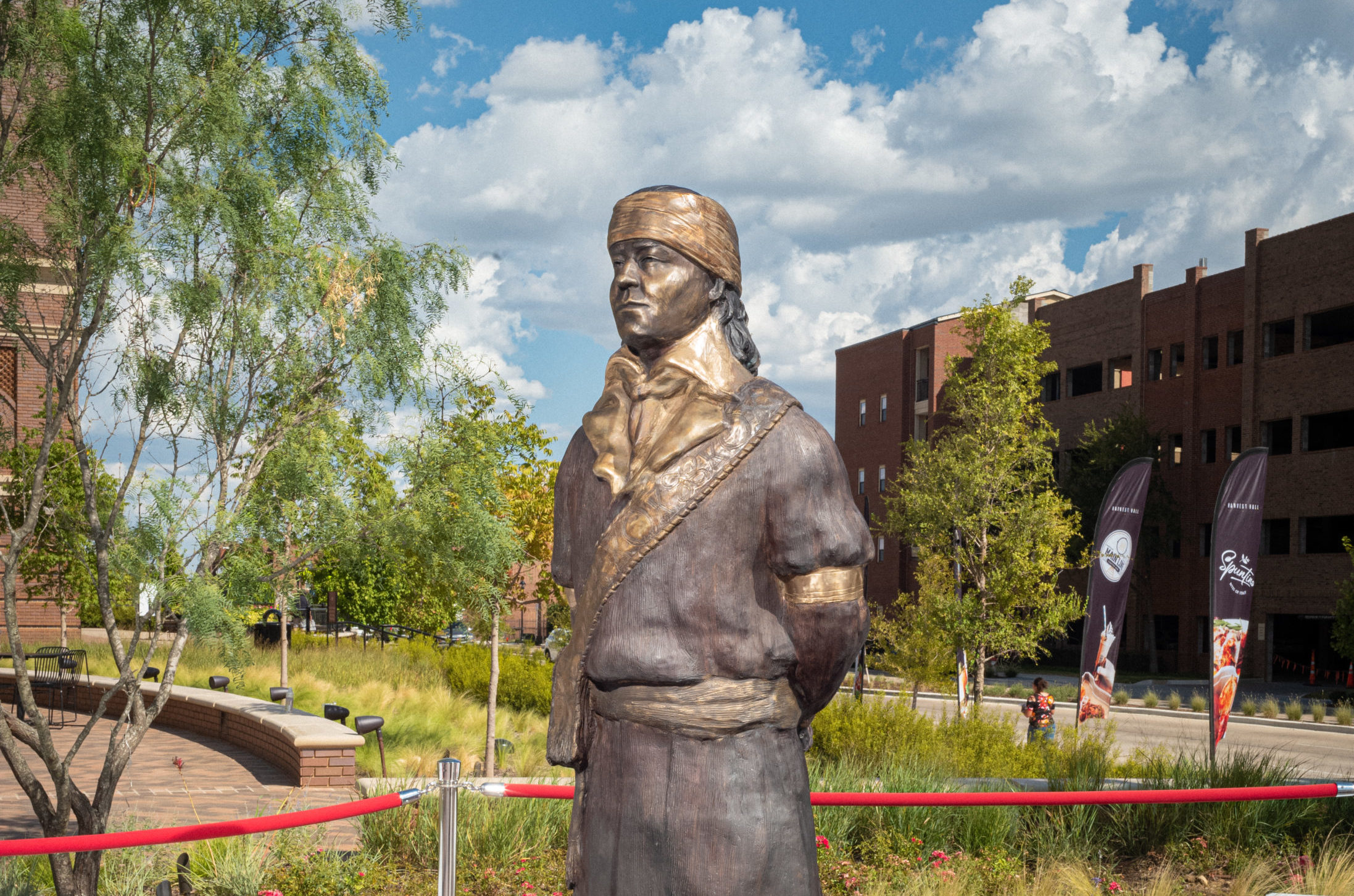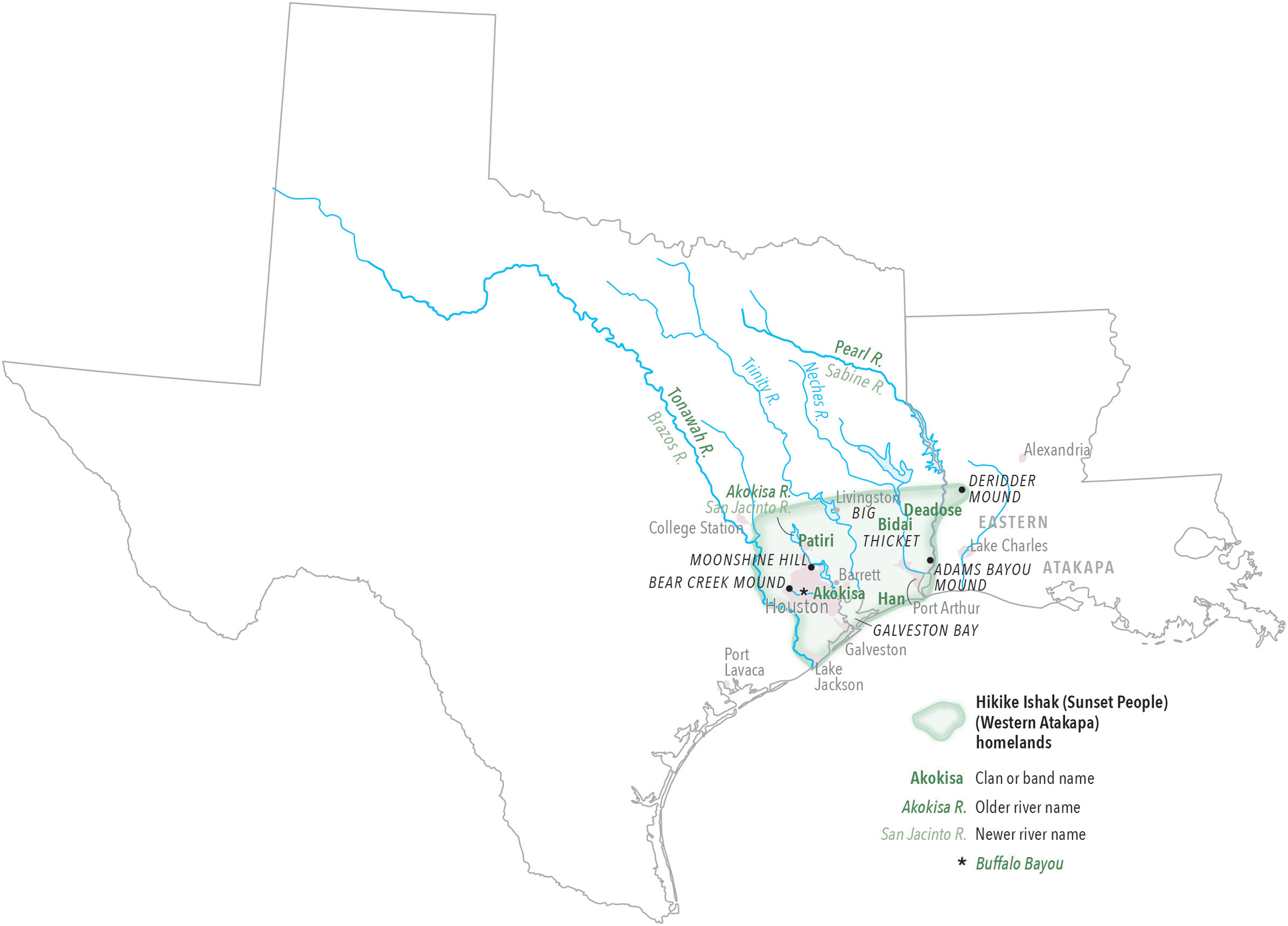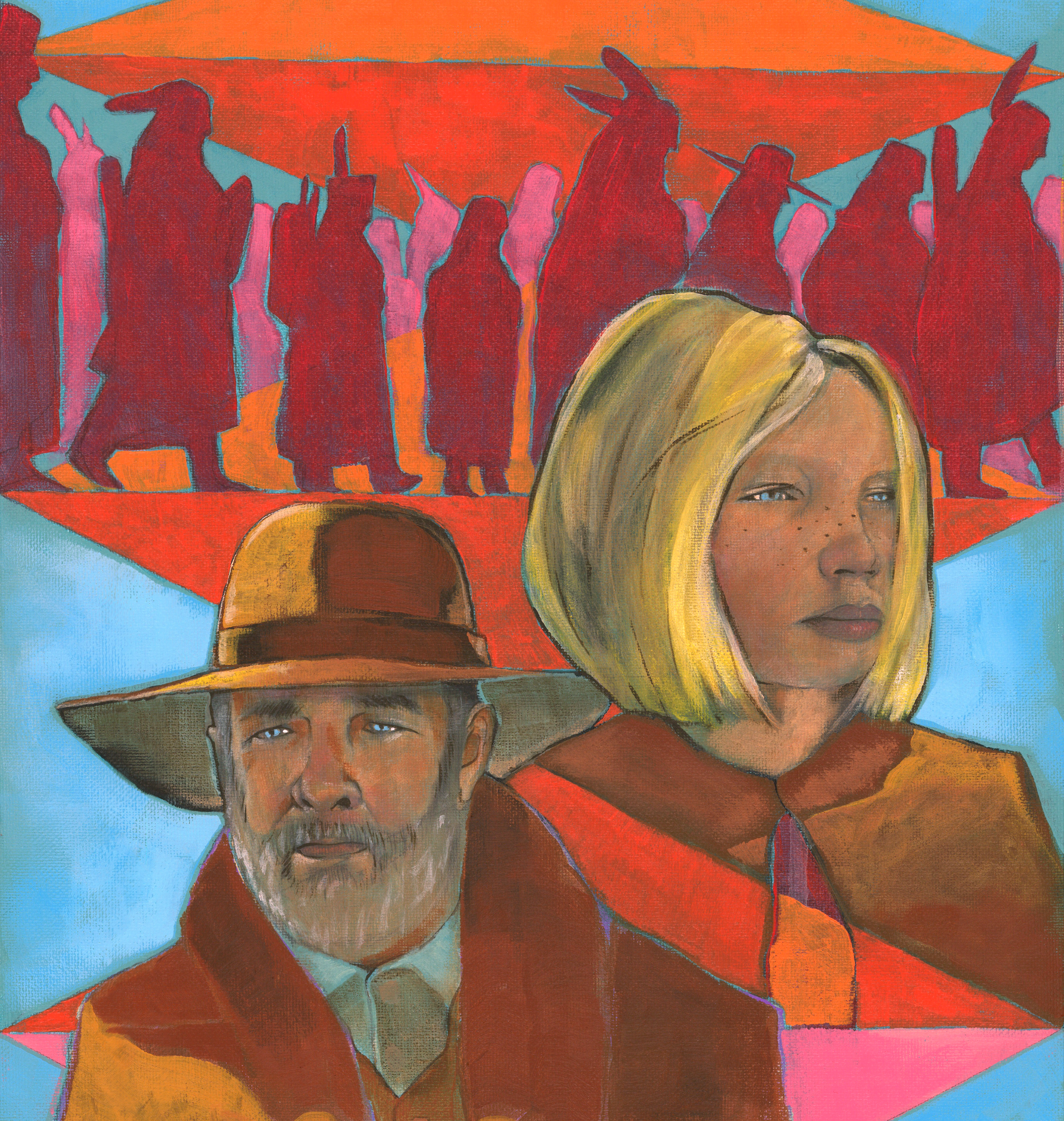This article was published in partnership with NBC News and the Indigenous Investigative Collective, a project of the Native American Journalists Association.
On the blistering September day that ended Grapefest, a wine festival in Grapevine outside of Dallas, Mayor William Tate pushed up the brim of his cowboy hat and addressed the crowd gathered for the unveiling of a new public work of art: Peace Circle.
“It is important that history be accurate,” Tate said of the 11 bronze statues made to commemorate the brokering of peace in 1843 between 10 Native American leaders and Sam Houston, the president of the Republic of Texas.
One of those statues, which was included after the Mount Tabor Indian Community advocated for it, represents the Cherokee leader Devereaux Jarrett Bell. According to Mount Tabor and Grapevine city officials, Bell signed the treaty under the alias “Chicken Trotter.”
For the leaders of the Mount Tabor Indian Community, a group of a few hundred members based in northeast Texas, the inclusion of this towering bronze figure is a long-awaited public recognition of the man they say led their tribe during one of its darkest chapters.
However, according to Cherokee historians, genealogists and officials of federally recognized tribes, Mount Tabor Indian Community’s historical claims are not true.
Cherokee researchers say the purported leader of Mount Tabor who signed the 1843 treaty, identified in the Peace Circle sculpture as Devereaux Jarrett “Chicken Trotter” Bell, is actually two separate people: Bell, a well documented figure in Cherokee history who is not known to have lived in Texas, and Chicken Trotter, a Cherokee man of whom little is known beyond his signature on the treaty.
“It’s a disgrace to that person’s history,” said Catherine Grey, a citizen of the Cherokee Nation and one of the tribe’s historians. “Devereaux Jarrett Bell deserves his legacy and his history to be told correctly, as does Chicken Trotter. They both deserve that, and their descendants deserve that.”
The Mount Tabor Indian Community claims to descend from Cherokees, Choctaws, Chickasaws and Muscogees who arrived in Texas in the 19th century. But the group is not officially recognized as a tribal nation by the federal government, and has been unable to document its claims. Federally recognized tribes, including the Cherokee Nation, have accused Mount Tabor of being one of many organizations that have attempted to manufacture claims of tribal status, co-opting Indigenous identity and positioning themselves to profit from it.
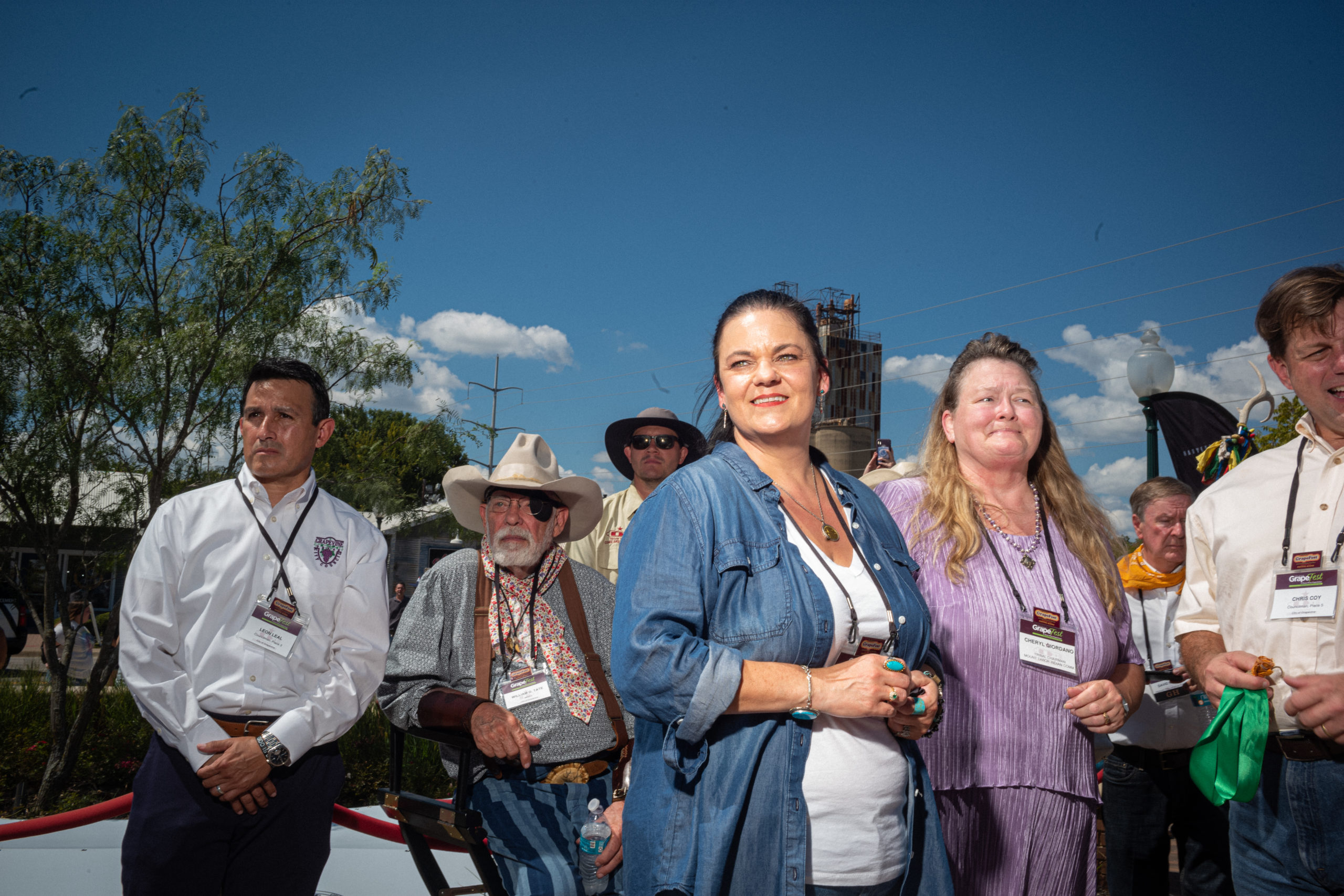
Cherokee officials say there is no evidence suggesting that the Cherokees who lived in the Republic of Texas in the mid-1800s ever formed a tribal government — which would be necessary to demonstrate as part of any claim Mount Tabor could make to tribal status today.
“They’re one of a large number of organizations across the country that pose as Indian tribes and seek some form of recognition,” said Chuck Hoskin Jr., principal chief of the Cherokee Nation.
Mount Tabor Chairman Cheryl Giordano denied the Cherokee Nation’s accusations and defended the group’s legitimacy. Mount Tabor has twice begun the process of applying for federal recognition as a tribal nation — stopping only because of a lack of funding to complete the application, the group said.
“We feel like we’ve already met the criteria and we just need to get the United States to acknowledge that,” Giordano said.
Mount Tabor has applied for at least one federal grant meant for Native Americans, but was unsuccessful. It’s not clear how much money, if any, the group has raised privately. The group’s leaders say they plan to apply for more from the Administration for Native Americans, a department of Health and Human Services.
Giordano and J.C. Thompson, Mount Tabor’s former chairman, said they have documentation of the tribe’s history, including historical meeting minutes, but they declined to share copies or details, saying the documents were in a storage unit.
There are 574 federally recognized tribes, a designation that includes an array of rights tied to treaty law, including legal standing and federal services. Mount Tabor’s leaders say they aim to tap these rights by applying for federal recognition.
Eight tribes have gained federal recognition in the last decade, and two unrecognized tribes are currently petitioning the federal government for this distinction — but even without it, claiming tribal status can be lucrative. Some groups that aren’t federally recognized have set up nonprofits and collected millions of dollars in donations and grants they were not eligible to receive, the federal government has found.
“We call them C-PAINs: Corporations Posing As Indigenous Nations,” said Deborah Dotson, president of the Delaware Nation, a federally recognized tribe based in Oklahoma. “They compete with us for grants. They receive donations. The state will give them tax breaks.”
Some of these groups are legitimate tribes that have chosen not to seek federal recognition because the application process is costly and arduous or because the federal government’s historical policies of genocide have destroyed the families, communities, languages and histories that would prove their continous existence.
Others, though, build historical connections where none existed, by advocating for recognition from state governments, inserting questionable entries into the historical narrative — like the statue in Grapevine, critics of Mount Tabor say — and establishing nonprofits.
Mount Tabor became a nonprofit in Texas in 2014, but it hasn’t reported a windfall in grants or private fundraising — its financial resources have never exceeded $50,000 in any one year, according to tax records.
Other groups’ efforts have been more fruitful. A 2012 Government Accountability Office report found that over a four-year period, 26 of the 400 nonfederally recognized tribes it identified had been awarded over $100 million of government funds. In most of those cases, the groups were eligible for the grants because they were nonprofits or state-recognized tribes. In some instances, though, the report found federal funds went to groups that did not meet the necessary criteria to receive them, such as having a reservation.
“They really are parasites on the system,” Chief Ben Barnes of the Shawnee Tribe said.
Many states have processes to recognize tribes as sovereign entities, and the designation is often seen as a final step before a successful application for federal recognition. There are more than 60 state-recognized tribes that are not yet recognized by the federal government, according to the National Conference of State Legislatures.
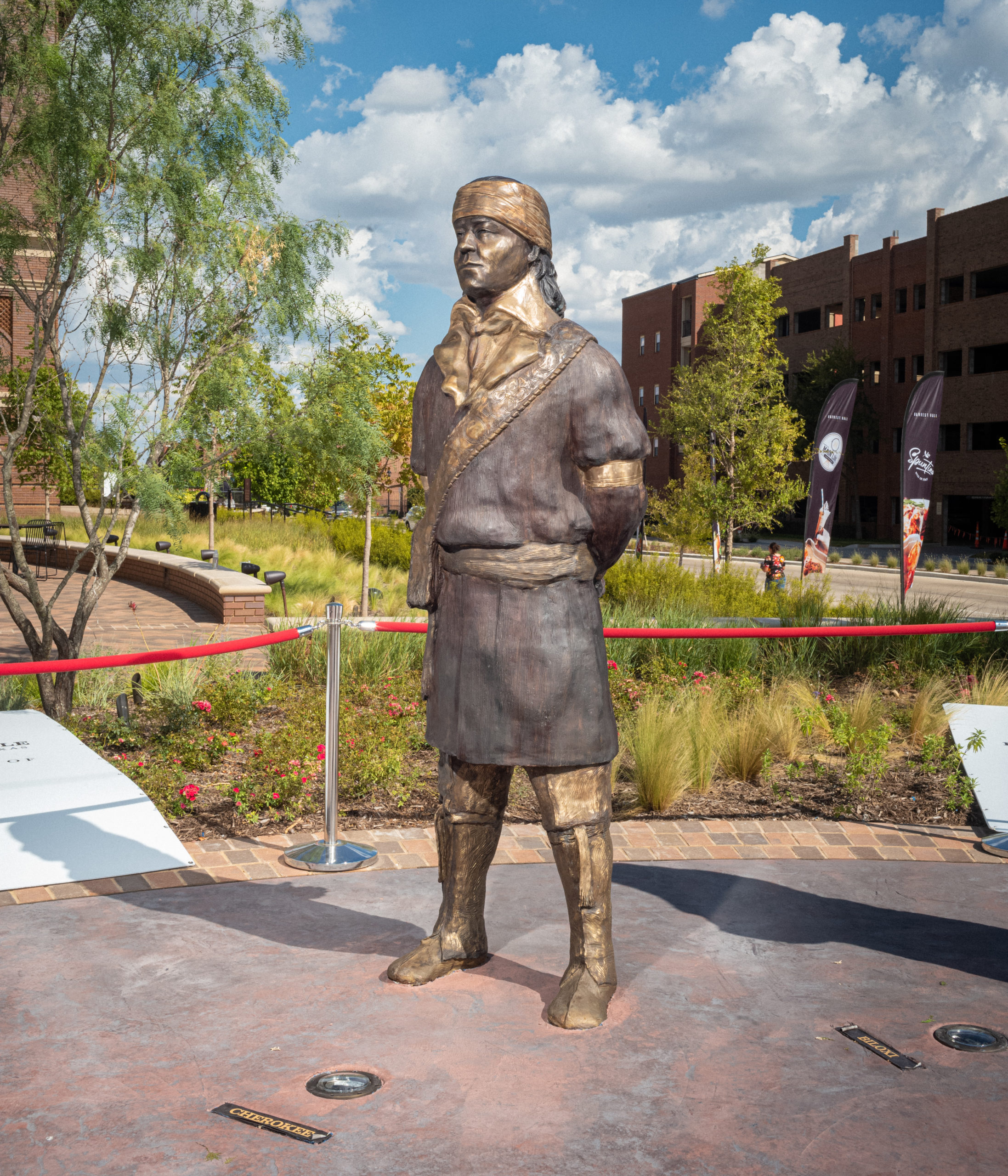
However, in Texas, there is no legal mechanism to recognize tribes, leading many groups to secure legislation recognizing their “valuable contributions to the state” instead. These state citations stop short of recognizing those groups as sovereign governments, which would pave the way toward federal recognition.
In 2017, the Mount Tabor Indian Community successfully lobbied state Sen. Bryan Hughes, a Republican who represents East Texas, to write a commendation recognizing Mount Tabor. Hughes did not respond to requests for comment.
Hoskin, Barnes and other federally recognized tribal leaders say the Mount Tabor Indian Community and the statue the group convinced Grapevine to erect are examples of serious failures by local and state officials to vet, or understand, claims to Indigenous lineage and tribal nation status. And these failures come with a high cost, they say.
Hoskin said the distortion of historical fact not only complicates real claims to Indigenous status made by tribes still seeking federal recognition, but distracts from the true history of recognized tribes tasked with preserving it.
“Cherokee people and the Cherokee Nation, we are trying to save our own culture and language and lifeways to the extent that it’s left,” Hoskin said.
This isn’t the first time J.C. Thompson, Mount Tabor’s former chairman, has been connected to a group accused of making a false claim to tribal nationhood, according to documents obtained by NBC News and the Texas Observer.
In 1982, Thompson helped found an organization in Missouri that also claims Cherokee lineage: the Northern Cherokee Nation of the Old Louisiana Territory. Thompson, who identifies as Choctaw but is not a citizen of that tribe, is listed in leadership roles, including vice president, in many of the Northern Cherokee Nation of the Old Louisiana Territory’s original tax documents.
The organization, which is not recognized by Missouri or the federal government, has been denounced by the Cherokee Nation as fake and was the subject of a 2019 investigation by The Los Angeles Times that found members of that group had received more than $260 million in government contracts meant for minority business owners.
Members of the group defended their claims of Indigenous ancestry by unsuccessfully suing the city of St. Louis in federal court, after it took away the minority business status.
BECOME A MEMBER OF THE TEXAS OBSERVER
You can chip in for as little as $3 a month.
In the 2012 Government Accountability Office report, the Northern Cherokee Nation of the Old Louisiana Territory, as well as an offshoot of the group, the Northern Cherokee Nation, are listed as the beneficiaries of funding from federal programs that were intended for tribal citizens or minority business owners. (The Mount Tabor Indian Community was not mentioned in that report.)
In recent interviews with NBC News and the Texas Observer, Thompson denied any wrongdoing, both in Missouri and Texas. While he defends Mount Tabor as a legitimate tribe, he said he now sees the Northern Cherokee Nation of the Old Louisiana Territory as fraudulent. Thompson said he only helped manage the group when he believed it was created as a “social organization” and left once he realized it was illegitimate.
Beverly Baker Northup, the president of the Northern Cherokee Nation of the Old Louisiana Territory, defended the group, adding it has a legitimate claim for federal recognition, and questioned Thompson’s motives in working with the group to get grants. “It is my opinion he was looking for an easy way to make money,” she said.
In response to Northup’s account, Thompson said he fell out with her and other members of the Northern Cherokee Nation group in the 1980s and did not benefit from any grants.
Six years after helping to establish the Northern Cherokee Nation of the Old Louisiana Territory in Missouri, Thompson became chairman of the Mount Tabor Indian Community in Texas.
Thompson’s narrative of Mount Tabor’s founding is based on an executive order that he says President James K. Polk issued in 1844, endorsing the establishment of a new Cherokee settlement in the Republic of Texas. Thompson and Giordano, Mount Tabor’s current chairman, say that several prominent Cherokee families, including Devereaux Jarrett Bell’s, were at the center of a bitter internal feud in Indian Territory, in what’s currently Oklahoma, and some of those families sought refuge in Texas.
“Based on the executive order, if that is actual and factual, that gave us the authority to set up a government, to set up a location, to set up a new place of residence,” Giordano said.
But Polk was not inaugurated until 1845, and historians say there is no evidence of the executive order Mount Tabor describes, or even that Polk wanted Cherokee citizens to move to Texas to become an autonomous community.
“I haven’t seen any document in which Polk endorsed the idea,” said Michael David Cohen, a research professor at American University and the former editor of the James K. Polk Project at the University of Tennessee.
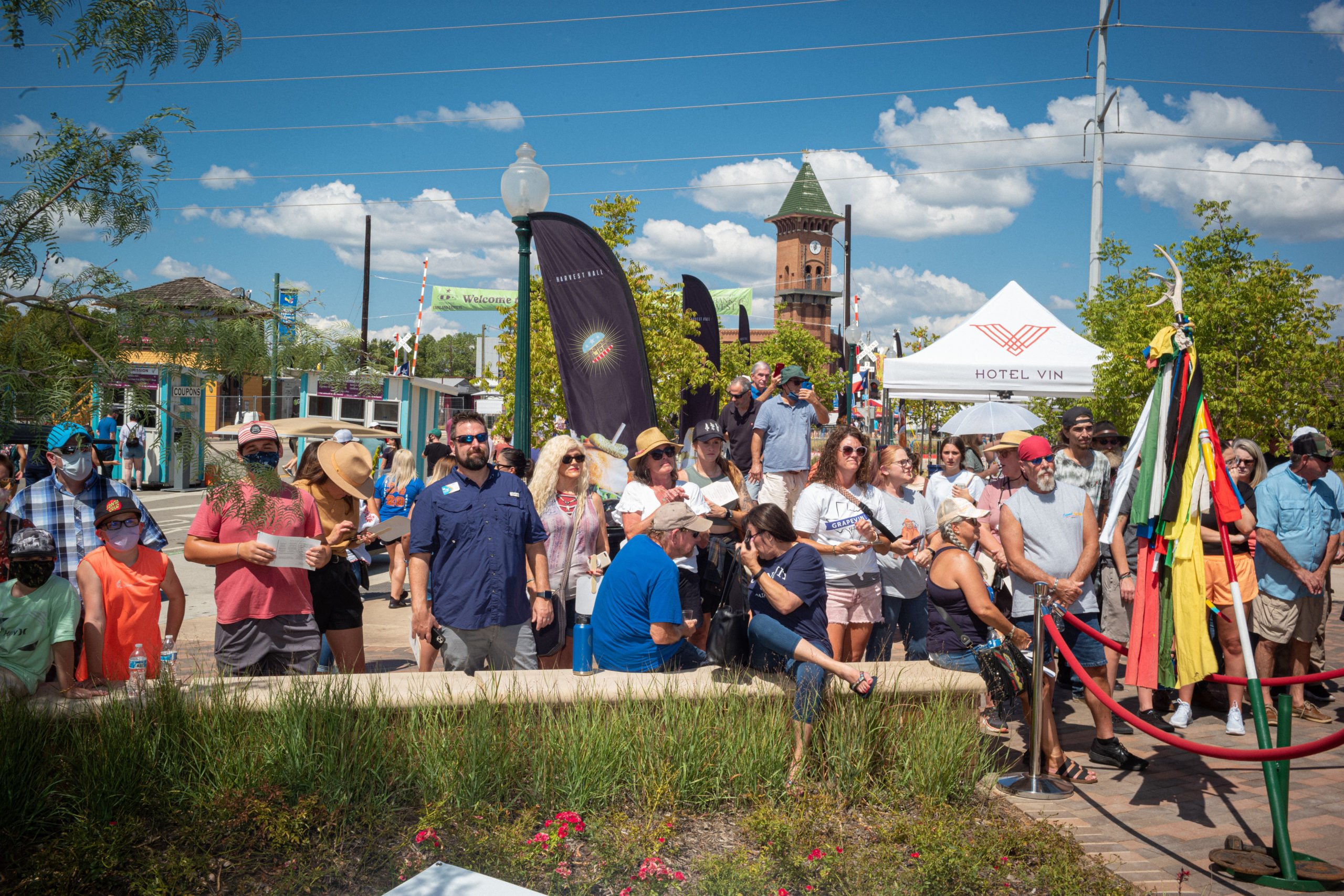
Giordano and Thompson’s historical case is based on the claim that Mount Tabor formed a sovereign government in East Texas in the 19th century that continues through today. As proof, they cite tribal meeting minutes stretching back a century and Mount Tabor’s constitution.
But Thompson said most of the documentation proving the claims, including the meeting minutes, are in a storage unit in Texas, and he declined to make them available. He did provide a copy of the group’s constitution that was drafted in 1998, the year he ended his time as chairman.
“We have our annual meetings. Those annual meetings is the government. It’s not the same government as in the Cherokee Nation,” Thompson said. “Did we have a government house? Did we have a capital? No, but we had one leader that people turned to.”
That leader, Thompson said, was Devereaux Jarrett “Chicken Trotter” Bell.
Thompson said his research that Bell and Chicken Trotter are actually the same man is based on three secondhand accounts from people who are no longer alive and a Texas land purchase proposal from the 1840s, which he declined to provide.
“There’s no direct thing that says, ‘Yes, this person is this person,’” Thomspon said. “It’s a preponderance of evidence.”
Members of Bell’s family did travel to Texas in the 1840s and stayed for about 20 years before returning to the Cherokee Nation, according to a 1972 book, “Genealogy of Old & New Cherokee Indian Families,” written by George Morrison Bell, a historian and relative of Devereaux Jarrett Bell. However, among the numerous Bells listed in the book as present in Texas at that time, there is no mention of either Devereaux Jarrett Bell or Chicken Trotter.
Other Cherokee historians and genealogists say there is no evidence that Bell, whose life was well documented, was ever part of Mount Tabor or that he ever led a group of Cherokees under the name Chicken Trotter.
Grey, the Cherokee Nation historian, said it’s one of many vague and unverifiable historical claims that Thompson has made about the Mount Tabor Indian Community. “It’s throwing stuff up against the wall and seeing what will stick,” she said.
Barnes, the Shawnee chief, said groups that manufacture claims to tribal status are an illustration of how important it is for more politicians to understand that tribal nationhood is a political status, not an ethnicity or a racial identity that can be claimed through heritage alone.
“Groups of particular races don’t negotiate treaties — nations negotiate treaties between themselves,” he said. “I think that’s often what gets conflated is, that descendancy status is not a conveyance of political status.”
In recent years, Thompson has pushed unsuccessfully for the Texas Legislature to more formally recognize Mount Tabor as a Native American community eligible for federal recognition. And in September, after two years of working with the city of Grapevine, he helped get the Bell statue erected.
When presented with the Cherokee Nation’s position on Mount Tabor, and historians’ contention that Bell and Chicken Trotter were two different people, Tate, the mayor, did not directly respond. He said the city wasn’t looking for controversy on the Peace Circle.
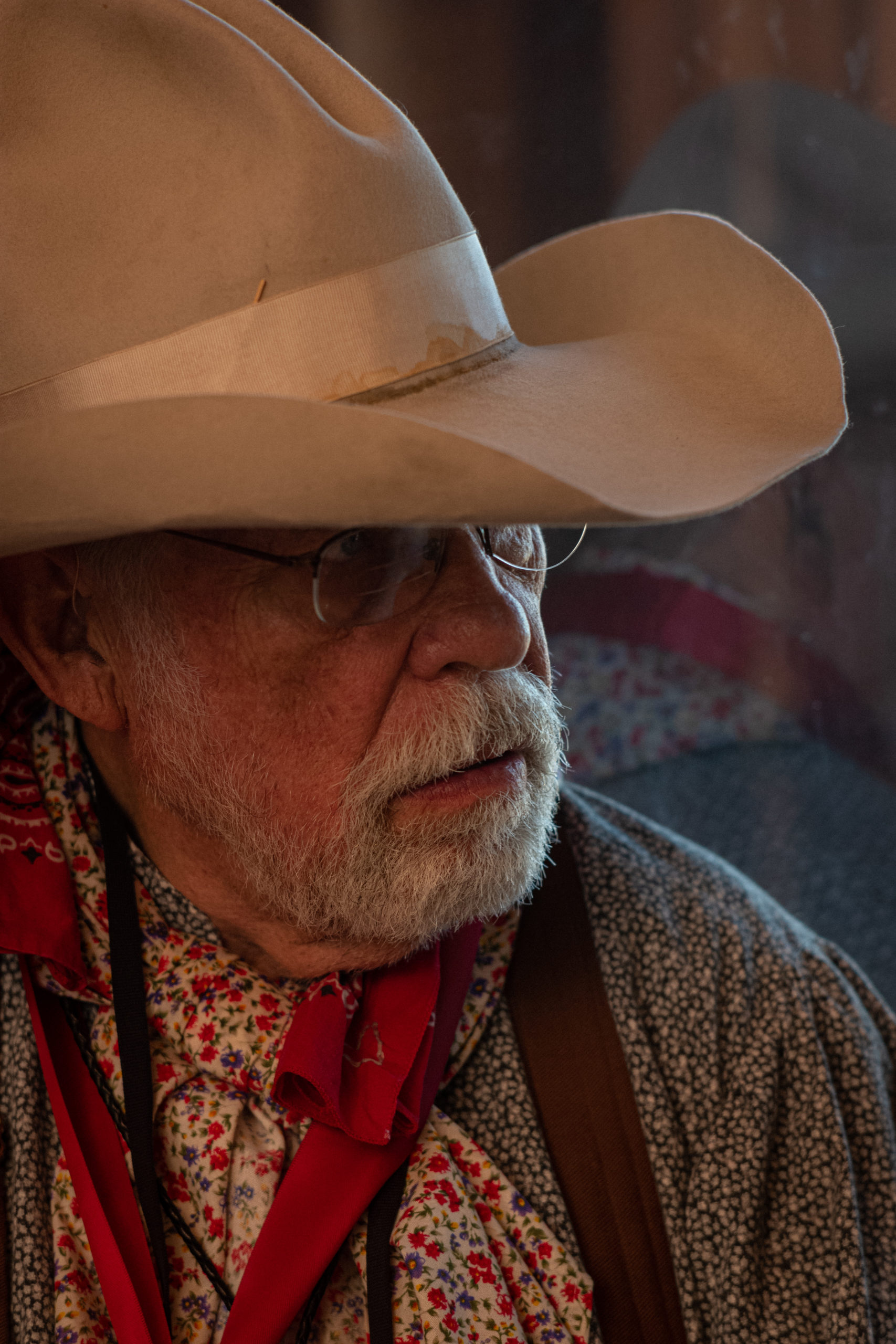
“We need to learn from the Native Americans,” Tate said after the unveiling ceremony. “We took their land, and we killed a lot of their people brutally. But they’re willing to forgive and forget, and they embraced us today in peace and friendship going forward.”
“I have Cherokee blood in myself through my mother’s side,” he added. (The Cherokee Nation says the mayor is not a citizen.)
Dotson, the Delaware Nation president, attended the Peace Circle unveiling in tribute to Chief Roasting Ear, one of the treaty signers, who was Delaware. She said she hadn’t been aware that Mount Tabor was an unrecognized tribe prior to the event.
“I probably would not have attended,” Dotson said. “I would have said we cannot be at this event if we had known they were here and they weren’t federally recognized.”
Hoskin points to Grapevine’s Peace Circle as yet another example of how Indigenous histories are oftentimes distorted.
“To the extent that anything is demonstrably inauthentic when it comes to our story, I don’t think it should be a part of public art or historical interpretation,” Hoskin said. “That would include the statue.”
Joshua Eaton was a contributing researcher and reporter.
